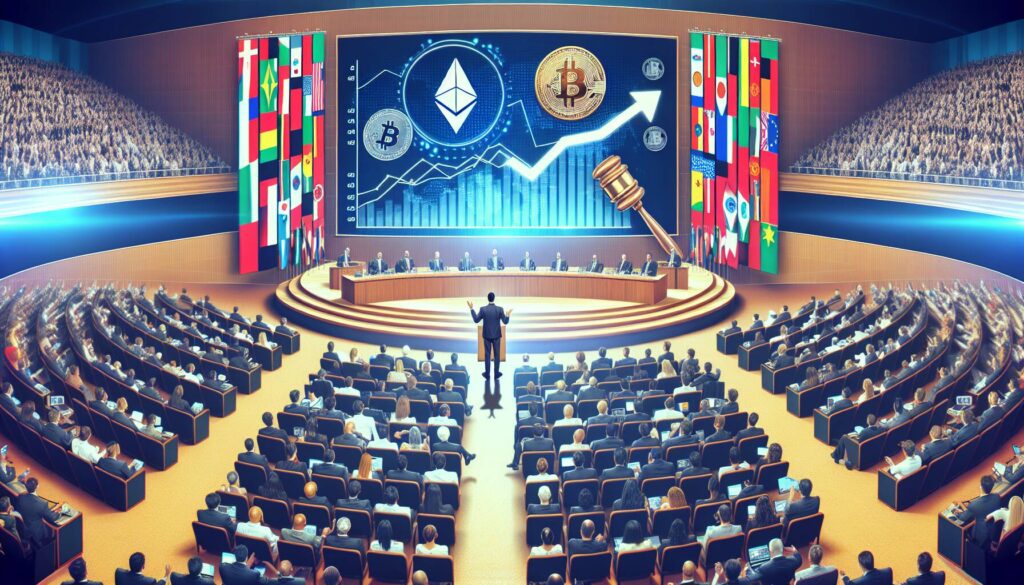In a recent statement, Matt Hougan of Bitwise highlighted the promising potential of Solana in the increasingly competitive landscape of stablecoins and tokenization. As the cryptocurrency market evolves, Solana has emerged as a formidable contender, leveraging its unique technological advantages to appeal to users and developers alike.
“Solana has good odds of winning a larger share of the stablecoin and tokenization market,” said Hougan, indicating confidence in the platform’s capabilities to drive future growth.
This sentiment reflects a broader recognition of Solana’s innovative features, such as its high transaction speeds and low fees, which are becoming essential in a sector where efficiency and scalability are key. With the ongoing discussions surrounding the future of stablecoins and the push for greater tokenization across various industries, Solana’s position is one to watch.
Market analysts continue to explore how platforms like Solana can reshape the financial landscape, making it essential for both investors and enthusiasts to stay informed about these developments. As competition heats up, Solana’s ability to secure a substantial market share could signal significant shifts within the cryptocurrency space, underscoring the dynamic nature of digital finance.
Solana’s Potential in the Stablecoin and Tokenization Market
Key points regarding Solana’s competitive position as highlighted by Bitwise’s Matt Hougan:
- Favorable Market Conditions:
- Growing demand for stablecoins and tokenization solutions.
- Increased institutional interest in blockchain technology.
- Technological Advantages:
- High transaction speeds and low costs associated with Solana’s network.
- Scalability that supports more applications and users.
- Strategic Partnerships:
- Collaborations with influential projects and businesses in the crypto space.
- Potential to deepen integration into existing financial systems.
- Competitive Edge:
- Positioning to capture market share from other blockchain platforms.
- Ability to attract developers and projects looking to utilize stablecoins.
The implications of these key points could significantly impact readers by influencing their investment decisions and understanding of the evolving digital finance landscape.
Solana’s Rising Potential in the Stablecoin Market
In the rapidly evolving world of digital assets, Solana is carving out a niche for itself, as highlighted by Bitwise’s Matt Hougan. He posits that Solana holds promising prospects for capturing a significant portion of the stablecoin and tokenization market. This assertion positions Solana amongst its competitors, which include Ethereum and Binance Smart Chain, both of which currently dominate the landscape.
One of Solana’s competitive advantages lies in its high transaction speed and low fees, making it an attractive choice for developers looking to create efficient decentralized applications. In contrast, Ethereum has faced ongoing challenges with network congestion and rising gas fees. This performance edge could allow Solana to lure projects that are struggling to scale on other platforms.
However, disadvantages still lurk in the shadows for Solana. Its relatively younger ecosystem means it does not yet have the robust community and array of established projects that Ethereum does. This presents a risk for developers seeking long-term viability. Moreover, with the stablecoin market’s numerous players, including Tether and USDC, Solana must swiftly build trust and partnerships to avoid being overshadowed.
The potential for Solana to capture market share could greatly benefit products aiming to integrate stablecoins for transactions. Conversely, established players that rely on Ethereum for their operations may feel threatened by Solana’s rise, possibly prompting them to diversify or enhance their own platforms. As Solana makes strides, the implications for both new entrants and existing competitors are palpable, setting the stage for a dynamic shift in the stablecoin and tokenization arena.
















